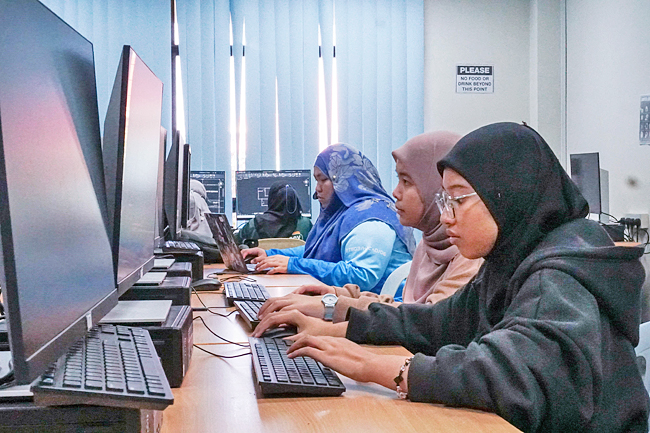In the field of education, innovation is the catalyst for progress, and the Sultanate is no stranger to pioneering educational advancements.
One such example can be found at the Institute of Brunei Technical Education (IBTE) Nakhoda Ragam Campus, which is experiencing a landmark year as it welcomes the first batch of graduates for its new trailblazing Dual Technical and Vocational Education and Training (TVET) programme of HNTec in Construction and Draughting, launched in 2021.
This dual TVET programme is a first of its kind in Brunei, comprising a two-year programme in which students receive training both from IBTE (for institutional-based training) and from the industry (for on-the-job training).
According to senior technical instructor and programme leader Ahmad Ikhwanuddin bin Haji Ali, what truly sets the Dual TVET programme apart is its emphasis on early industry exposure as students embark on their industry attachments right from the first semester of their studies.
Unlike conventional education systems that segregate classroom learning and practical experience, the Dual TVET seamlessly integrates these elements, enabling students to apply theoretical knowledge in real-world scenarios.
“That’s where the uniqueness comes from. The Dual TVET system emphasises work attachment throughout their studies, not just towards the end. When you hear Dual TVET, it means they are doing attachments as they are learning,” he explained in an interview with the Bulletin.
“I teach them things like HSSE (Health, Safety, Security, and Environment), and the attachment experiences they share in class actually contribute to classroom discussions. One student had to make a report on an on-site injury.”

Therefore, rather than visualising the situation on the projector in the classroom, the students experience it first-hand and are, in fact, involved in the day-to-day operations of the companies to which they are attached.
“Students who are attached to architecture firms meet clients and face deadlines, which are things they haven’t learnt in school. They learn these skills in the company, so by the time they graduate, they hit the ground running.”
The expectations for the programme, Ahmad Ikhwanuddin continued, are to open up new horizons for the graduates, noting how, prior to the Dual TVET programme.
When there were only sole courses in construction or draughting, students had limited options in their career path, he said.
“In this programme, it is designed so that the students can go either way. For the draughting side, if they want to further their studies, they can pursue interior design and architecture.
“For students more interested in construction, they can pursue fields like civil engineering, which involve more mathematical aspects of construction.”
Speaking about the origins of the programme, Ahmad Ikhwanuddin shared that initially, the steer was from the Manpower Industry Steering Committee (MISC) in Construction under the Manpower Planning and Employment Council (MPEC) at the Prime Minister’s Office.
“From there, they identified that every year, there are thousands of graduates in construction and drafting, and one of the key things they want to do for this particular programme is to expose the students to the industry as early in their programme as possible.
“The MISC in Construction was trying to find ways to revamp and breathe new life into the programme and improve the outcomes of our students and graduates. The Dual TVET programme that we have now is based on a system that has been practised in Germany for quite a long time.”
One of the programme’s most remarkable achievements has been its role in promoting gender equality in the construction and draughting sectors.
Ahmad Ikhwanuddin noted that in the last eight years, the construction and draughting courses were male-dominated environments.
Now, however, with the Dual TVET programme, the male-to-female ratio is nearly 50/50, signifying the industry’s changing landscape as women are making significant inroads in the construction and draughting industry.
This change, according to the senior technical instructor, is driven by various factors, including internal and external influences, such as having mothers working in the industry.
The Dual TVET programme of HNTec in Construction and Draughting is now on its third cohort, with the first cohort graduating at the end of the year.
“We produce about 100 to 125 students per year for the Dual TVET programme at the IBTE Nakhoda Ragam Campus.
“Currently, the students are attached to various companies, most of which are private.
“For the first intake about to graduate, I would estimate that around five per cent have been offered jobs with the companies to which they were attached, which is a great achievement, considering it’s been less than six months since they graduated,” he said. – Wardi Wasil


